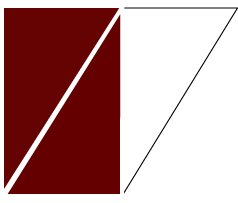 Geometric dissections have a long history, going back at least as far as the ancient 7-piece Chinese tangram puzzle. They form the basis of a great number of recreational puzzles. We might mention puzzlists Sam Loyd and Harold Dudeney who came up with some wonderful dissection examples over a century ago. When a topic occurs like this in the area of recreational mathematics, the results are scattered and disparate. It needed someone to assemble the known facts and put them in some order.
Geometric dissections have a long history, going back at least as far as the ancient 7-piece Chinese tangram puzzle. They form the basis of a great number of recreational puzzles. We might mention puzzlists Sam Loyd and Harold Dudeney who came up with some wonderful dissection examples over a century ago. When a topic occurs like this in the area of recreational mathematics, the results are scattered and disparate. It needed someone to assemble the known facts and put them in some order.
This person was Harry Lindgren. When he published his book Geometric Dissections in 1964, it was claimed to be the only book in any language which dealt with dissections.
But what is a dissection? Let P, Q be two polygons. If we cut P into a finite number of non-overlapping polygonal pieces, and reassemble these to form the polygon Q, we say that we have a dissection from P to Q. In this case, the process is obviously reversible to give a dissection from Q to P.
 Click the diagram at right to see a simple dissection of a rectangle to a parallelogram.
Click the diagram at right to see a simple dissection of a rectangle to a parallelogram.
The definition above can be extended in several ways. For example we might replace polygons P, Q by sets of polygons, and we shall often do this. Or we might allow the sets and dissections in include curved arcs. Or we could extend our thinking to 3 dimensions, and talk about dissections of polyhedra – much more difficult!
There are two basic problems to consider with dissections.
• Given polygons P and Q, does there exist a dissection from one to the other?
• If the answer to the above question is ‘yes’, then we can ask: What is the smallest possible number of pieces in such a dissection?
We shall see that the first question is relatively easy to answer. The second question is much more difficult.